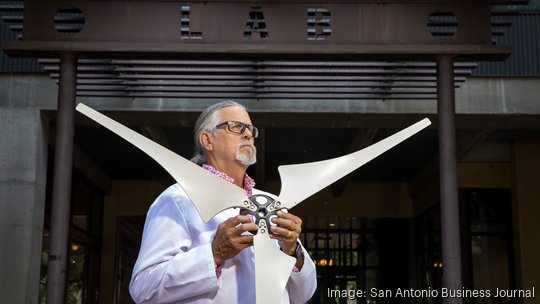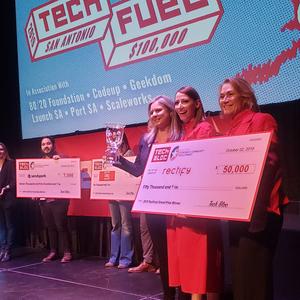
Dan Marsh, CEO of San Antonio-based Pirate Wind Turbines, is working on a new technology he believes will revolutionize the small wind turbine industry.
"Our goal at Pirate Wind Turbines is to design and build the most efficient small wind turbines in the world," Marsh told the San Antonio Business Journal.
Marsh has worked as an air conditioning mechanic for 23 years. With a solid background in mechanical service regarding "things that spin," Marsh was able to recognize the core problems of the existing small wind turbine industry.
"I created this company because I'm sick of it. I'm sick of liars and cheaters and people that sell things that don't work," Marsh said. "And it's prevalent in the small wind turbine industry. They have all these big claims about making a certain amount of power, but what they don't tell you is that the wind has to blow 80 miles an hour for that to happen."
Marsh is building 400- to 1,000-watt small wind turbines with plans to go to 10,000 watts. Whereas traditional small wind turbines are equipped with fail-safes such as blade pitch control or electronic braking systems to prevent the blades from over-spinning, Marsh says his self-regulating wind turbine generators can control power no matter how fast the blades spin.
Marsh explained how the technology works.
Electricity from small wind turbines goes into a device called a charge controller, according to Marsh. All charge controllers have maximum input ratings, ranging from 30 volts to 600 volts. Marsh says he has figured out a way to program his small wind turbines not to exceed the charge controller manufacturer's maximum input rating.
"My technology can follow the same power curve," Marsh added. "But when the wind starts getting really tough, [it] starts smoothing out and become[s] stable."
Marsh designed his first prototype over a year ago and conducted two testing sessions at Southwest Research Institute, which he said proved his technology worked. Two months ago, Texas State University also agreed to test his technology.
"I'm going to get to do a test on the roof for three turbines — one regular turbine, one modified turbine and my turbine, and the students are going to design the control and data acquisition to see whose does better," Marsh said.
On May 21, Marsh released his first crowdfunding video. Marsh is seeking $100,000 to advance research, including data acquisition equipment, on the first 10 to 20 sellable prototypes.
While Marsh says he is currently soliciting grants, he is also open to working with investors.
"I'm all for investors, I'm just not there yet," Marsh said. "I have to get these prototypes out in the field and get all the data logged in to prove without a shadow of a doubt that I kicked everybody's butt."
Once the prototypes are built and prove successful, Marsh says, his next step will be to get costs on mass production.
"I want it to be built in the USA," Marsh said. "I am pro-USA in a big way, even working with friendly countries ... I don't mind working with countries that we have good trade agreements with."
Despite having some distance to go before his wind turbines reach mass production, Marsh believes now is the right time to go public.
"My passion for renewable and sustainable energy brought me here today and now it's to the point of, I've got to get the word out," Marsh said.



